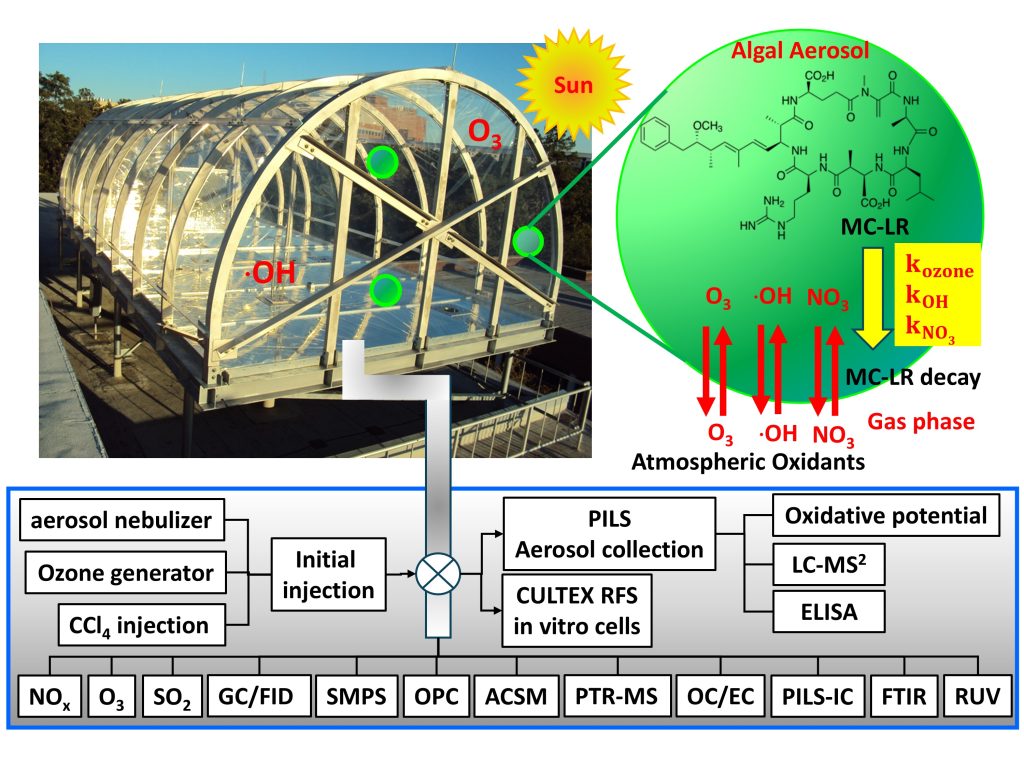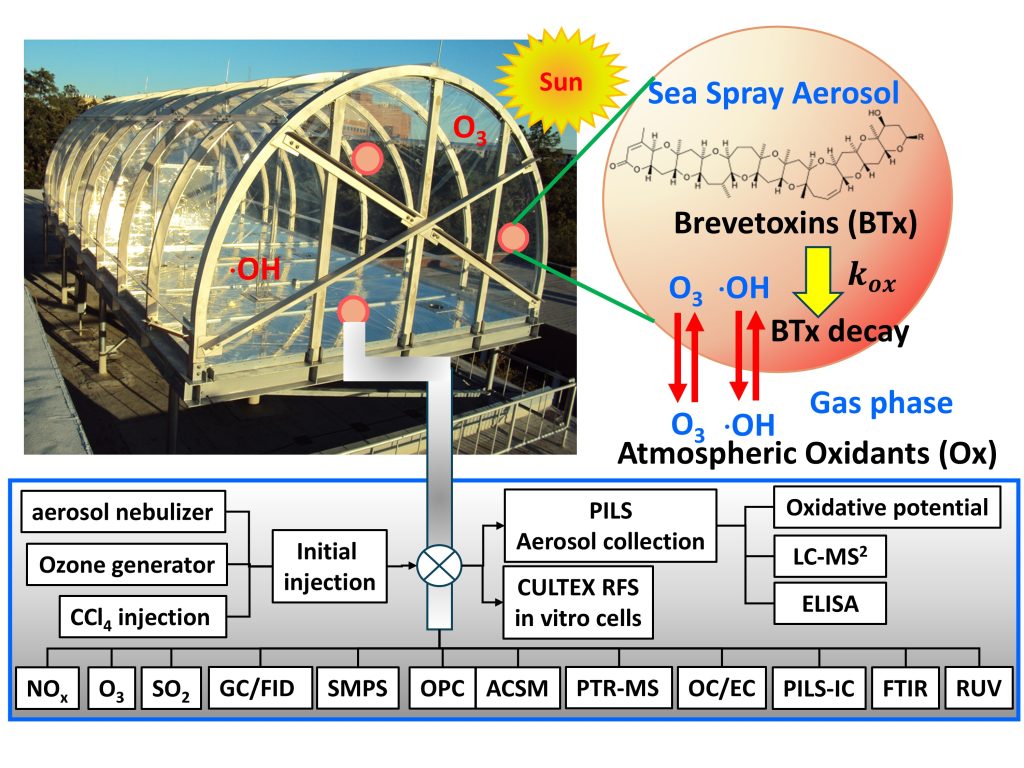Harmful algal blooms (HABs) are a major health problem around the World. Reports of HABs have drastically increased over the past 50 years as a result of warmer climate conditions and increased pollution, coastal development, and other factors.
Algal aerosol from red tide breaks
Karenia (K.) brevis is a dinoflagellate indigenous to the waters of the Gulf of Mexico and the Caribbean. Its blooms recur in native regions and multiply to neighboring coastlines. K. brevis is the photosynthetic organism primarily responsible for harmful algae blooms known as “red tide” and produces a harmful toxin, known as brevetoxin (BTx). Scientists report Florida’s sequential hits from Hurricanes Helene and Milton are fueling the outbreak of toxic algae blooms that appeared before the Hurricanes slammed the Gulf coast.
Algal aerosol from cyanobacterial blooms in fresh water and estuaries
Several strains of blue-green algae, or cyanobacteria produce HABs in freshwater systems across the U.S. .Cyanobacterial algae produce toxins, such as Microcystin-LR (MC-LR), that can make animals and people sick. These toxins are classically associated with acute liver and renal toxicity following ingestion which can lead to mortality of people and aquatic organisms,
Impacts of algal aerosol on respiratory health
Algae toxins are aerosolized with sea spray aerosol (SSA) or fresh-water spray aerosol. Algal aerosol and toxins can be carried inland by winds. One of the major organ systems targeted by algal aerosol and toxins is the respiratory system. For example, studies suggest that coastal residents may experience higher rates of respiratory diagnoses during red tide periods compared to non-red tide periods.
Studies at UF Atmospheric Chemistry Lab.
- Atmospheric processes of algal toxins
- Exposure of in vitro respiratory cells to algal aerosol and toxins via Collaboratory works with public health department
- Oxidative potentials of algal aerosol collected at fields or chamber simulations
- Development of the Harmful Algal Aerosol Reaction (HAAR) model to simulation the oxidative degradation of algal toxins
- Enrichment of algal toxins in sea spray aerosol or lake spray aerosol

